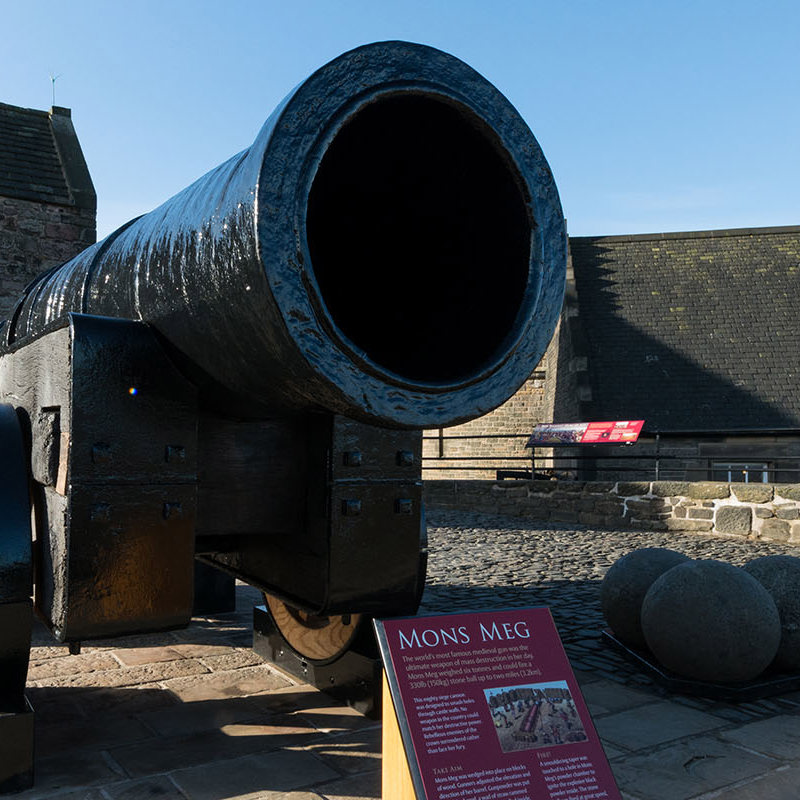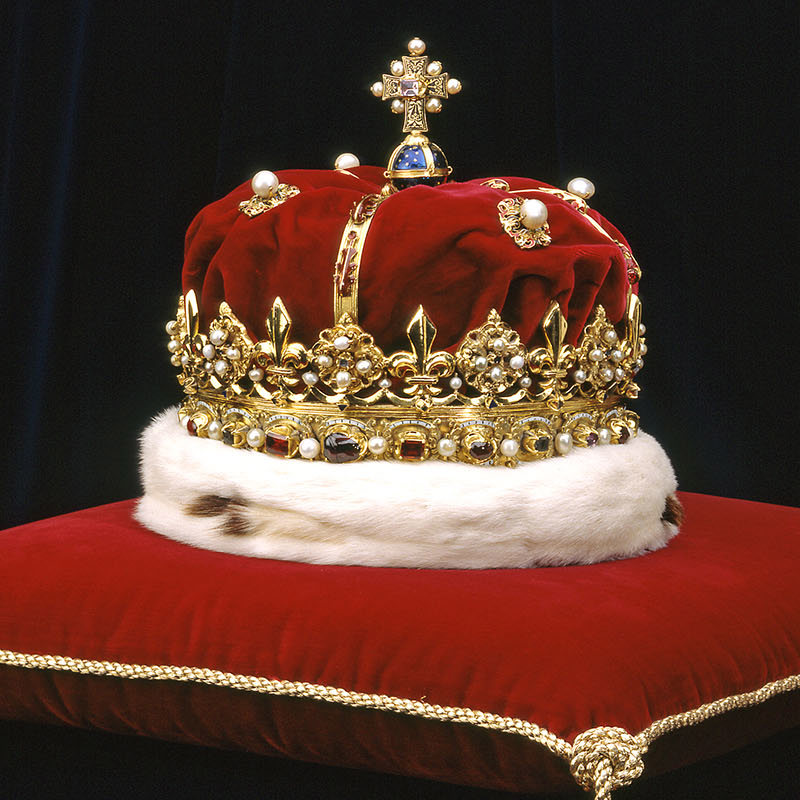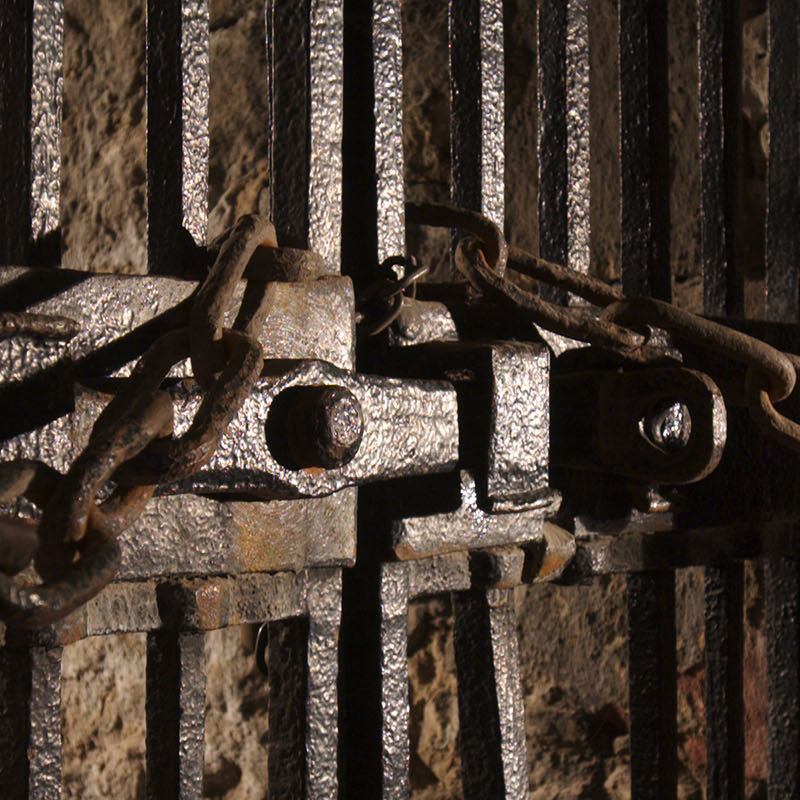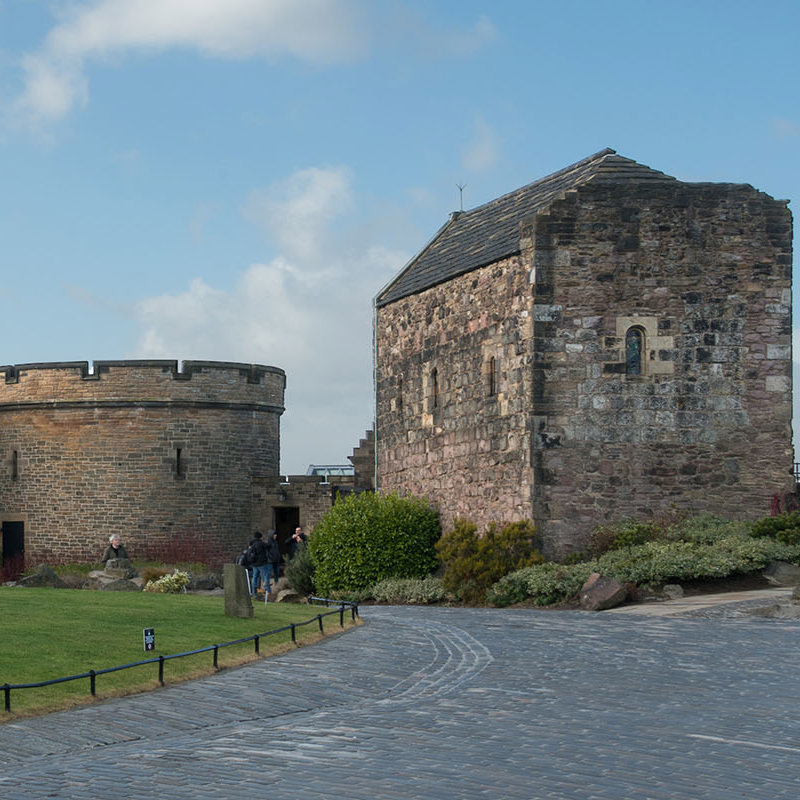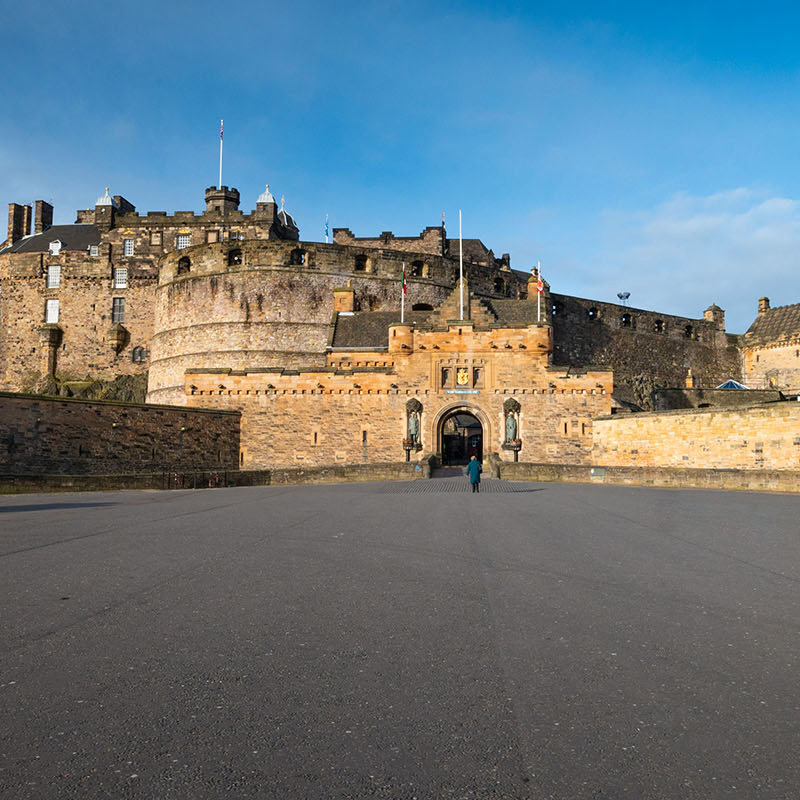
Morning
Start early and stay as long as you like. You can see all of the highlights of Edinburgh Castle in a morning – or explore for an entire day.
2-3 hours
-
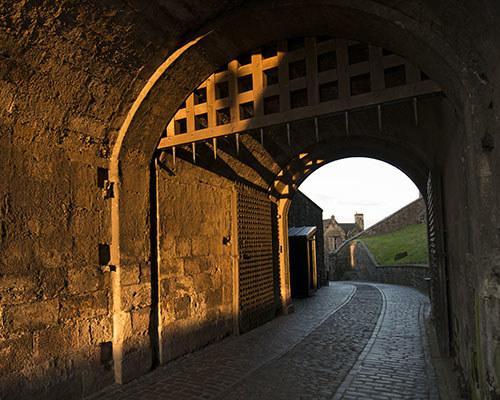
Portcullis Gate
Pass beneath the spikes of a raised portcullis. This fortified gateway was built almost 450 years ago in the wake of the devastating Lang Siege. Three sets of heavy wooden doors once sat alongside the iron gate to ward off intruders. The top floor – Argyle Tower – was added in the 1880s. Look for the lions, a symbol of royalty.
-

Argyle Battery
Stand on a six-gun battery built in the 1730s. Its open outlook to the north provided an ideal vantage point for defending the castle. The cannons in position date from about 1810, the time of the Napoleonic Wars with France. Take a moment to admire the sweeping views over the city and towards Fife.
-

Lang Stairs
Count all 70 steps on the most direct route to the summit of the Castle Rock. This great flight of stairs once formed the original entrance to the castle. The gentler alternative route that winds up and around the cobbled hill was created in the 1600s for moving heavy guns.
-
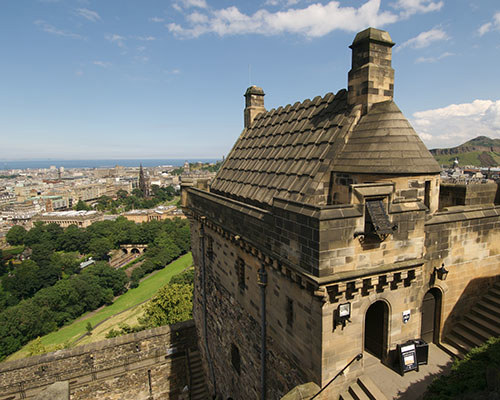
Fight for the Castle - Argyle Tower
Telling the story of Edinburgh Castle in the Wars of Independence, this exhibition uses animations, projections and medieval objects found here to bring this dramatic episode in the stronghold’s heritage to life. The vaulted chamber is dominated by a huge model trebuchet that towers above a stone ball believed to have been fired at the castle during the siege of 1296, the first time such giant catapults are recorded as being used in Scotland. The exhibition sits directly above the gateway that was the focus of a daring attack at the end of the siege of 1341.
-
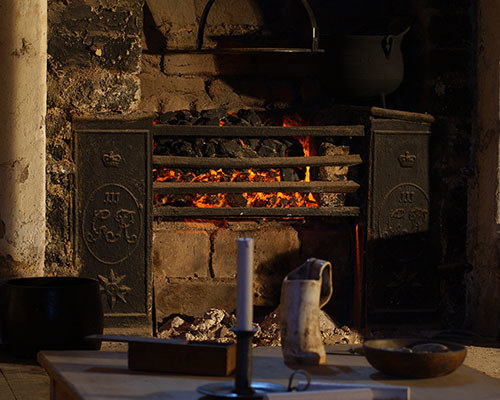
Prisons of War Exhibition
Pirates and prisoners of war were held in the vaults below the Great Hall in the 1700s and 1800s. Learn about the sailors locked up here, among them many Americans and a five-year-old French drummer boy captured at the Battle of Trafalgar. One successful escape attempt saw 48 inmates flee.
-
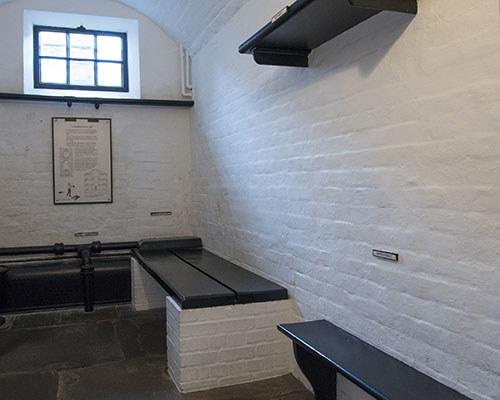
Military Prison
Peek inside this tiny Victorian prison, housing just 16 cells. ‘Drunk on guard’ was one of the offences that could get a soldier locked up. Inmates had to endure solitary confinement and hard punishment such as working a treadmill for hours on end.
-
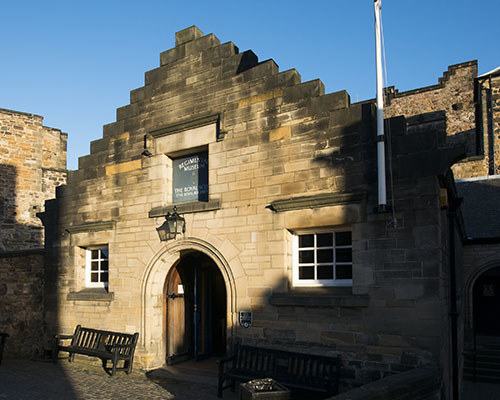
Royal Scots Museum
Explore the heritage of the Royal Scots, until recently the British Army’s oldest serving regiment. This independent museum’s stories span more than 350 years of campaigning. Learn how the regiment earned the nickname ‘Pontius Pilate’s bodyguard’ as well as the six Victoria Crosses on display.
-
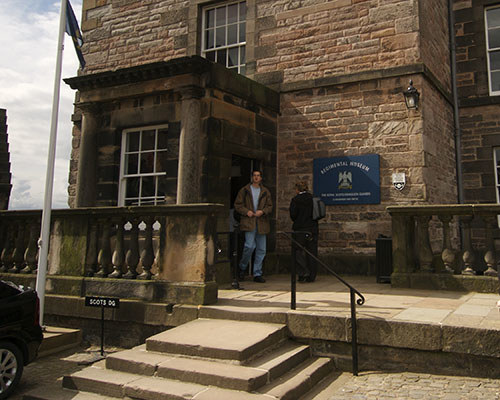
Royal Scots Dragoon Guards Museum
Delve into the history of the Royal Scots Dragoon Guards, the senior Scottish regiment in the British Army. Treasures in this independent museum include a French Eagle and Standard taken at the Battle of Waterloo. See the epic cavalry charge that led to their capture in a painting in the Great Hall.
-
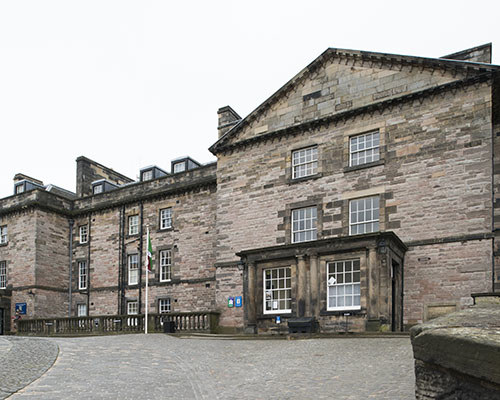
New Barracks
A full infantry battalion – some 600 men – was once housed in this seven-storey building. It was built in response to the threat of a French invasion, but the Napoleonic Wars ended not long after its completion. As the military continues to use the New Barracks today, it is off limits to visitors.
-
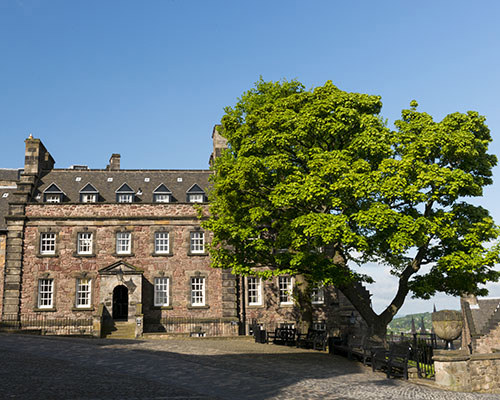
Governor's House
Admire the elegant exterior of the Georgian lodgings built in 1742 for the castle’s governor. The house is still used for its original purpose and so isn’t open to visitors. Ordnance Survey’s origins may stem from the basement: mapmaker William Roy stayed here during the Military Survey of Scotland.
-
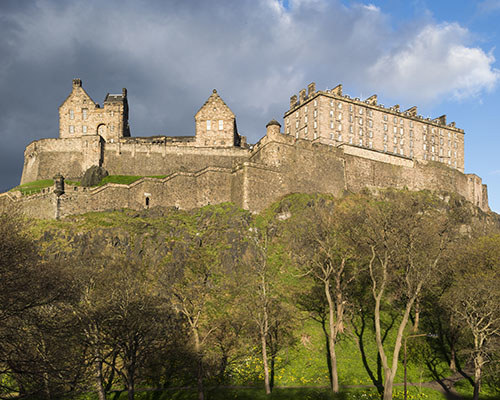
Western viewpoint
Amazing views to the west of Edinburgh are all yours from this high rampart. On clear days, even distant Highland peaks are part of the picture – they’re most visible when capped with snow.
-
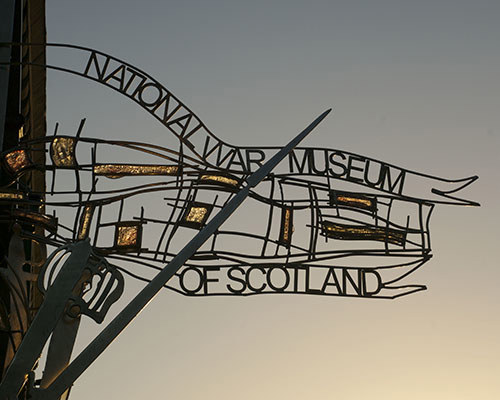
National War Museum
Take in Scotland’s proud military history from the 1600s to the present day. Get up close to iconic paintings like The Thin Red Line and see military kilts and bagpipes and modern-day weaponry. Say hello to Bob the regimental dog and find out how he earned his medal in the Crimean War.
-

One o'clock Gun Exhibition
Learn about Scotland’s most explosive timekeeper. The 105mm field gun is fired every day at 1pm, except Sundays, Good Friday and Christmas Day. The practice goes back to 1861, when the blast signalled the time to ships in the Firth of Forth.
-
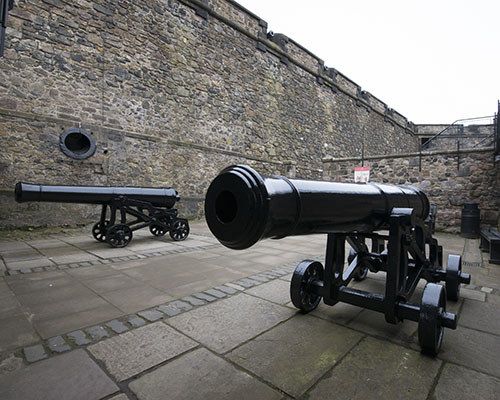
Low Defences
Take the steps down by the One o'Clock Gun to reach this two-gun battery directly below the Argyle Battery. Your reward is an uninterrupted view across the city – which you may even have all to yourself.
